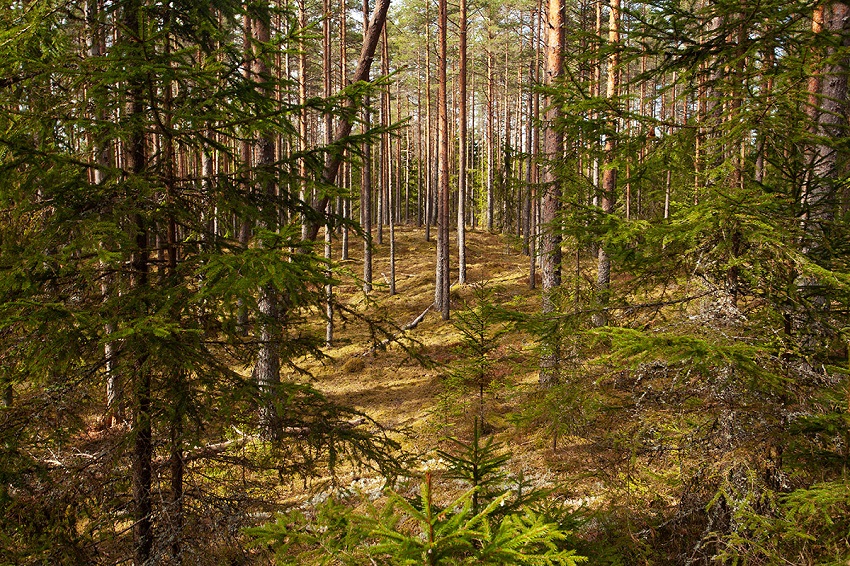Forests cover more than half (51%) of Estonian land
There are alvar forests, boreal heath forests, dry boreal forests, fresh boreal forests, dry boreo-nemoral forests, fresh boreo-nemoral forests, floodplain forests, paludified forests, peatland forests, drained peatland forests, and juniper shrublands in Estonia. The forest is one of the greatest treasures in Estonia, both naturally and economically. Most of the endangered species living in Estonia have made homes in old forests. It is estimated that about 20,000 species live in Estonian forests and that we have a comprehensive overview of the condition of, at best, a tenth of them. Among the most numerous species group – invertebrates –, thousands of species are presumed to be so far unregistered, and even among those registered, the well-being of rare species that are important from the nature conservation point of view is very difficult to monitor.
The forest is a community where trees form the main layer
Based on the classification of Estonian vegetation site types compiled by Jaanus Paal, Estonian forests are divided into five classes:
1. Dry and fresh forests
Dry and fresh forests grow on dry to humid mineral soils. The class includes:
- alvar forests;
- boreal heath forests;
- dry boreal forests;
- fresh boreal forests;
- fresh boreo-nemoral forests;
- dry boreo-nemoral forests

2. Floodplain forests and shrublands
The class includes floodplain forests and floodplain willow shrublands. Floodplain forests are forests that grow on flooded areas. They grow in river valleys on layered sediments carried and piled together by floods, as well as in shallow lakeside areas.
3. Paludified forests
Paludified forests include rich and poor paludified forests. These forests grow on flat terrains and in depressions. The upper layer of the soil is formed by peat less than 30 cm thick.
4. Peatland forests
Peatland forests include minerotrophic swamp forests, mixotrophic (transitional) bog forests, and ombrotrophic bog forests. These forests grow on swampy soils (more than 30 cm of peat).
5. Drained peatland forests
The class includes the drained peatland forests type group. They have been formed as a result of long-term drainage from open or sparse minerotrophic or transition fens with few trees.
Of the forest habitat types endangered in Europe and listed in the annex to the Habitats Directive, ten are found in Estonia:
- western taïga (9010*);
- Fennoscandian hemiboreal natural old broad-leaved deciduous forests (Quercus, Tilia, Acer, Fraxinus or Ulmus) rich in epiphytes (9020*);
- Fennoscandian herb-rich forests with Picea abies (9050);
- coniferous forests on, or connected to, glaciofluvial eskers (9060);
- Fennoscandian wooded pastures (9070);
- Fennoscandian deciduous swamp woods (9080*);
- Tilio-Acerion forests of slopes, screes and ravines (9180*);
- bog woodlands (91D0*);
- alluvial forests with Alnus glutinosa and Fraxinus excelsior (Alno-Padion, Alnion incanae, Salicion albae) (91E0);
- riparian mixed forests of Quercus robur, Ulmus laevis and Ulmus minor, Fraxinus excelsior or Fraxinus angustifolia, along the great rivers (Ulmenion minoris) (91F0).
Last modified: 05.11.2021